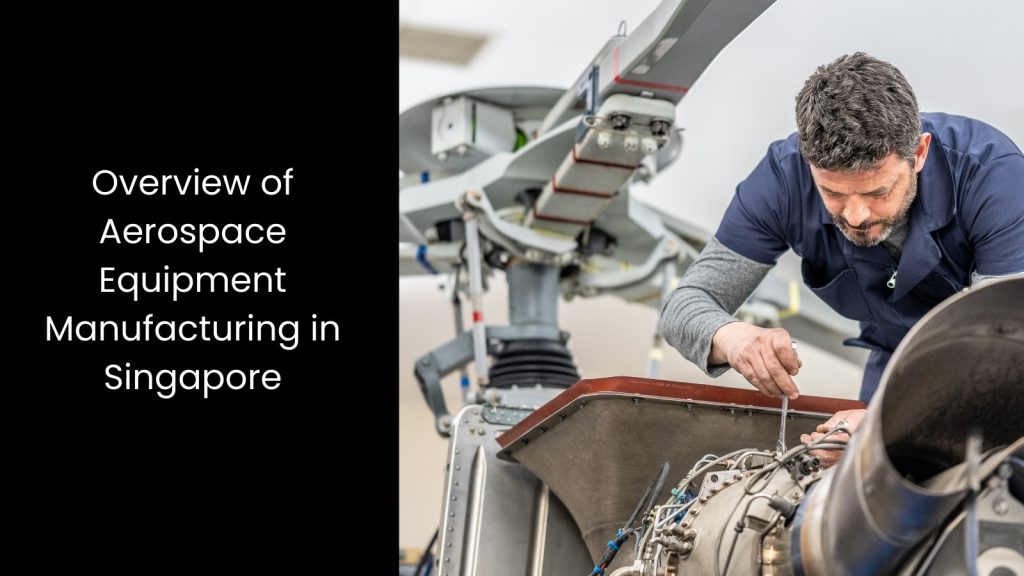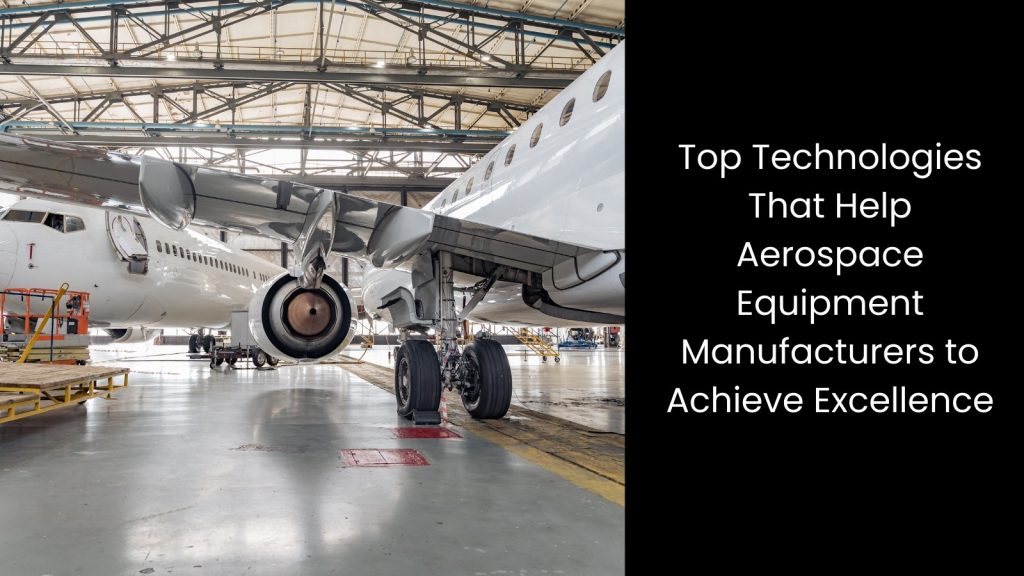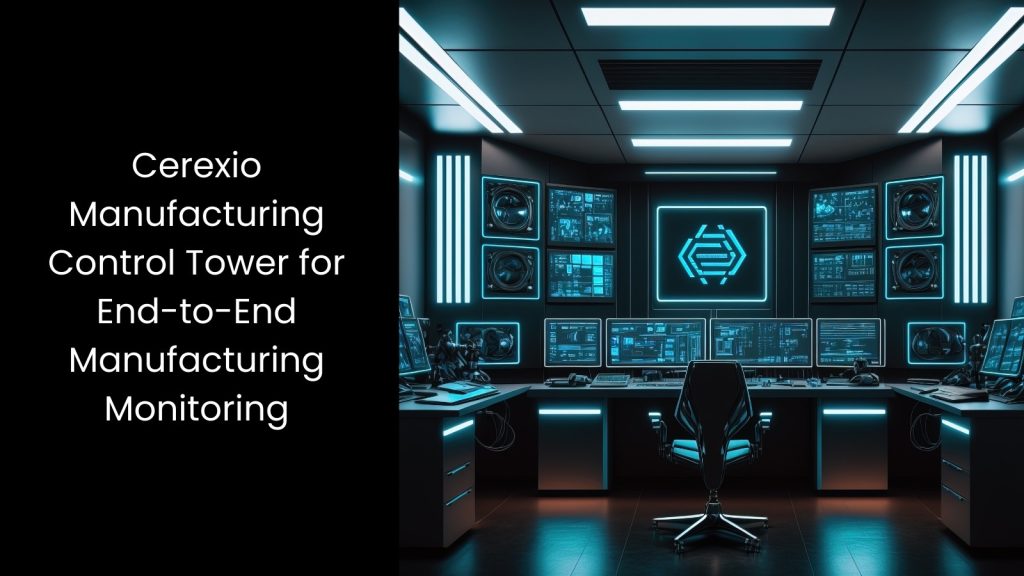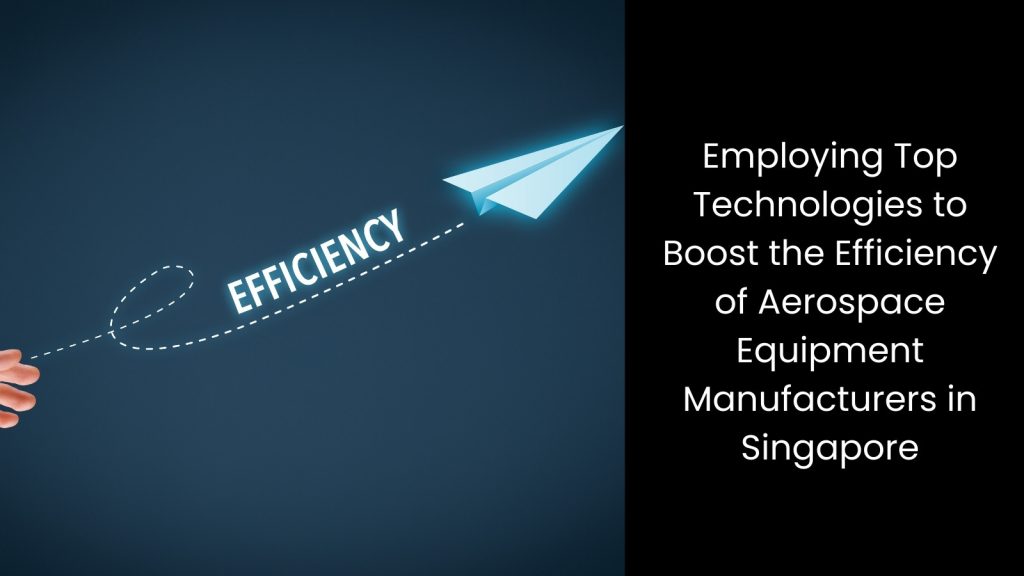In this article, we focus on the top technologies that make aerospace equipment manufacturers gain momentum in today’s world.
We will look into
- Overview of Aerospace Equipment Manufacturing in Singapore
- Top Technologies That Help Aerospace Equipment Manufacturers to Achieve Excellence
- Cerexio Manufacturing Control Tower for End-to-End Manufacturing Monitoring
- Employing Top Technologies to Boost the Efficiency of Aerospace Equipment Manufacturers in Singapore
Overview of Aerospace Equipment Manufacturing in Singapore

- Singapore hosts some of the world’s top aerospace industry companies and boasts one of Asia’s most advanced and varied aerospace ecosystems, which contributes significantly to its economy. The aerospace equipment manufacturing sector ranks among the leading industrial domains in Singapore, supporting the nation’s position as a key player in global aviation.
- This sector stands out alongside Singapore’s other major industries, such as electronics and chemicals, but holds unique importance due to its contributions to innovation and advanced engineering. Singapore’s aerospace industry companies have built a reputation for producing high-quality aircraft parts, servicing components, and offering maintenance, repair, and overhaul (MRO) services that meet international standards.
- However, aerospace equipment manufacturers face significant challenges in maintaining production efficiency and quality standards. They need to navigate high operational costs, strict regulatory requirements, and a limited talent pool trained in specialised aerospace skills.
- Plus, rising demand for lightweight, fuel-efficient parts adds pressure, requiring manufacturers to invest in advanced materials and new production techniques while managing costs. Additionally, the rapidly changing nature of technology in the aerospace industry Singapore mandates frequent upgrades, which strains budgets and resources.
- In order to achieve success in the aerospace industry in Singapore, manufacturers have to seek the help of the latest and most advanced technologies.
Top Technologies That Help Aerospace Equipment Manufacturers to Achieve Excellence

Automation and Robotics
Let’s understand how this occurs. As they can integrate robotic systems into manufacturing processes, these companies improve the speed and accuracy of assembling complex aircraft components. You know, robotics streamline repetitive tasks, such as drilling, fastening, and painting, allowing skilled workers to focus on more intricate operations that require human judgement. This division of labour increases productivity and ensures consistent quality across the production line.
Automation, on the other hand, also helps aviation companies in Singapore reduce operational costs by minimising material waste and decreasing the time required for each manufacturing cycle. As these companies implement advanced technologies, they gain the ability to monitor production processes in real time, enabling quick adjustments to enhance performance.
Furthermore, automation improves safety in the workplace by taking on dangerous tasks that could put human workers at risk. Not to mention that robotic systems can operate in hazardous environments without jeopardising employee well-being, creating a safer manufacturing setting.
Aerospace equipment manufacturers also leverage automation for predictive maintenance, using sensors and data analytics to anticipate equipment failures before they occur. It is quite evident that the incorporation of automation and robotics positions Aerospace Singapore as a leader in innovative manufacturing practices, allowing aviation companies in Singapore to compete effectively on a global scale while meeting the increasing demand for high-quality aircraft components.
Augmented Reality (AR) and Virtual Reality (VR)
These technologies provide innovative tools that streamline various stages of the manufacturing process. In the aerospace industry Singapore, manufacturers utilise AR and VR for training purposes, allowing employees to experience realistic simulations of aircraft assembly and maintenance without needing to interact with actual components. This immersive training reduces the learning curve and improves worker confidence, leading to higher efficiency and safety standards on the production floor.
Furthermore, AR applications assist technicians by overlaying digital information onto physical components, guiding them through complex assembly tasks. For instance, technicians can view step-by-step instructions or highlight specific areas that require attention, which reduces the chances of errors and speeds up the assembly process.
In addition to training and assembly assistance, VR enables aerospace manufacturers to design and visualise aircraft in a virtual environment before moving to the physical production phase. This capability allows engineers to test and modify designs quickly, resulting in more efficient workflows and fewer costly changes later on.
Artificial Intelligence and Machine Learning
For instance, AI algorithms can predict potential equipment failures by analysing historical maintenance data, allowing manufacturers to conduct predictive maintenance. This proactive approach reduces downtime and minimises unexpected production halts, leading to more reliable operations. Apart from that, AI and ML enhance quality control by inspecting components during production. Using computer vision systems, these technologies can detect defects or deviations from specifications much faster and more accurately than human inspectors. Since it is possible to ensure that only high-quality components proceed to assembly, manufacturers reduce waste and improve overall product reliability.
Furthermore, AI-driven simulations allow manufacturers to test new designs virtually before physical production. By running these simulations, companies can evaluate performance, safety, and efficiency, making necessary adjustments before committing resources to production.
Digital Twin Technology
For instance, manufacturers can test different configurations and materials in a virtual environment before physically building components, enabling them to optimise designs for efficiency and safety. This process reduces development time and costs, as companies can identify potential issues early in the design phase.
Additionally, digital twin facilitates predictive maintenance by continuously monitoring equipment and components. Aerospace manufacturers can analyse data from the digital twin to predict when a part might fail or require maintenance, allowing them to schedule repairs proactively. This approach minimises unexpected downtimes, enhances productivity, and prolongs the lifespan of equipment. Furthermore, digital twin technology aids in training employees by providing immersive simulations that replicate real-world scenarios.
With this in hand, workers can practise using machinery and equipment in a risk-free environment, improving their skills and confidence without jeopardising the safety or incurring costs associated with actual operations.
Cerexio Manufacturing Control Tower for End-to-End Manufacturing Monitoring

Employing a Cerexio Manufacturing Control Tower in aerospace equipment manufacturing enables end-to-end monitoring of production processes. This advanced platform provides real-time data analytics, enhancing visibility across operations. It streamlines decision-making, optimises resource allocation, and improves overall efficiency. By integrating various manufacturing components, Cerexio empowers manufacturers to identify bottlenecks, enhance quality control, and achieve higher productivity in aerospace production all under one location.
Employing Top Technologies to Boost the Efficiency of Aerospace Equipment Manufacturers in Singapore

Since this specific industry has much potential for profitability, sky is the limit for aerospace equipment manufacturers in Singapore! They can surely make this potential double if they boost their efficiency. With top technologies, these companies unlock a treasure trove of possibilities, enhancing their efficiency and quality to unprecedented levels. If you lack efficiency, it is time for you to rally behind this wave of transformation and celebrate the remarkable journey ahead in aerospace equipment manufacturing.
